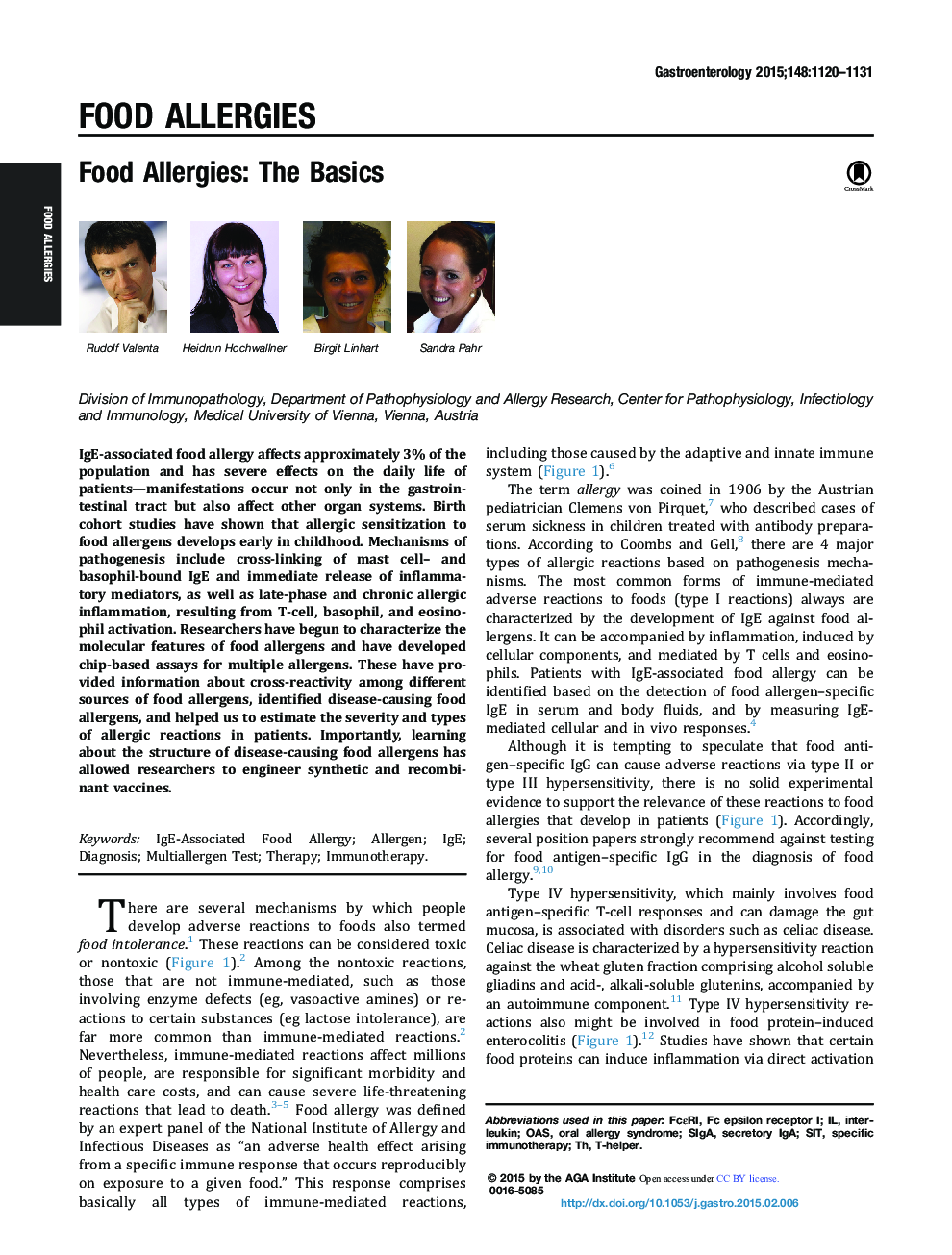| Article ID | Journal | Published Year | Pages | File Type |
|---|---|---|---|---|
| 6093644 | Gastroenterology | 2015 | 16 Pages |
IgE-associated food allergy affects approximately 3% of the population and has severe effects on the daily life of patients-manifestations occur not only in the gastrointestinal tract but also affect other organ systems. Birth cohort studies have shown that allergic sensitization to food allergens develops early in childhood. Mechanisms of pathogenesis include cross-linking of mast cell- and basophil-bound IgE and immediate release of inflammatory mediators, as well as late-phase and chronic allergic inflammation, resulting from T-cell, basophil, and eosinophil activation. Researchers have begun to characterize the molecular features of food allergens and have developed chip-based assays for multiple allergens. These have provided information about cross-reactivity among different sources of food allergens, identified disease-causing food allergens, and helped us to estimate the severity and types of allergic reactions in patients. Importantly, learning about the structure of disease-causing food allergens has allowed researchers to engineer synthetic and recombinant vaccines.
